An ice bath may not be the first thing that comes to mind when you think of taking care of yourself, but the benefits of cold water therapy tubs are truly extraordinary. Self-care can come in many forms, from painting your nails, meditating, baking or taking an ice bath, there are many things we can do for our mindfulness.
If you're looking for new ways to keep your mind, body and soul in top shape, then you might want to try cold water therapy. Many celebrities such as Joe Wicks, Emma Willis, David Beckham and Madonna are taking a plunge into ice baths, as the benefits of an ice bath aren't only for your body but your mind and nervous system as well.
Alasdair Nicoll, personal trainer and tutor for The Fitness Group, explains cold water therapy as follows:
"Cold water plunging, also known as cold water therapy, cold water immersion or cryotherapy, involves exposing the body to cold water for therapeutic purposes. It can be done through immersion in cold water, such as in a cold bath or an ice bath, or as some people prefer, in natural sources of cold water.
Cold water plunges are beneficial primarily for recovery purposes after intensive exercise. It helps to reduce inflammation, alleviating muscle soreness, improving circulation, boosting the immune system, and potentially aiding in weight loss."
Best cold water therapy tubs at a glance
How does cold water therapy work?
"Cold water plunging works by constricting blood vessels and reducing blood flow to the submerged body parts," Alasdair explains. : "This reduces inflammation and numbs nerve endings, leading to pain relief. Additionally, exposure to cold water can stimulate the release of endorphins, which are natural painkillers, and can trigger the activation of brown adipose tissue (brown fat), which burns calories to generate heat.
"Cold water therapy can be done at home using methods such as cold baths, ice baths, or cold showers, or you can invest in a cold water therapy tub. The frequency of session depends on individual tolerance levels, and the duration also depends on individual tolerance or preference. Typically you can spend anywhere from a few minutes to 15-20 minutes in the cold water."
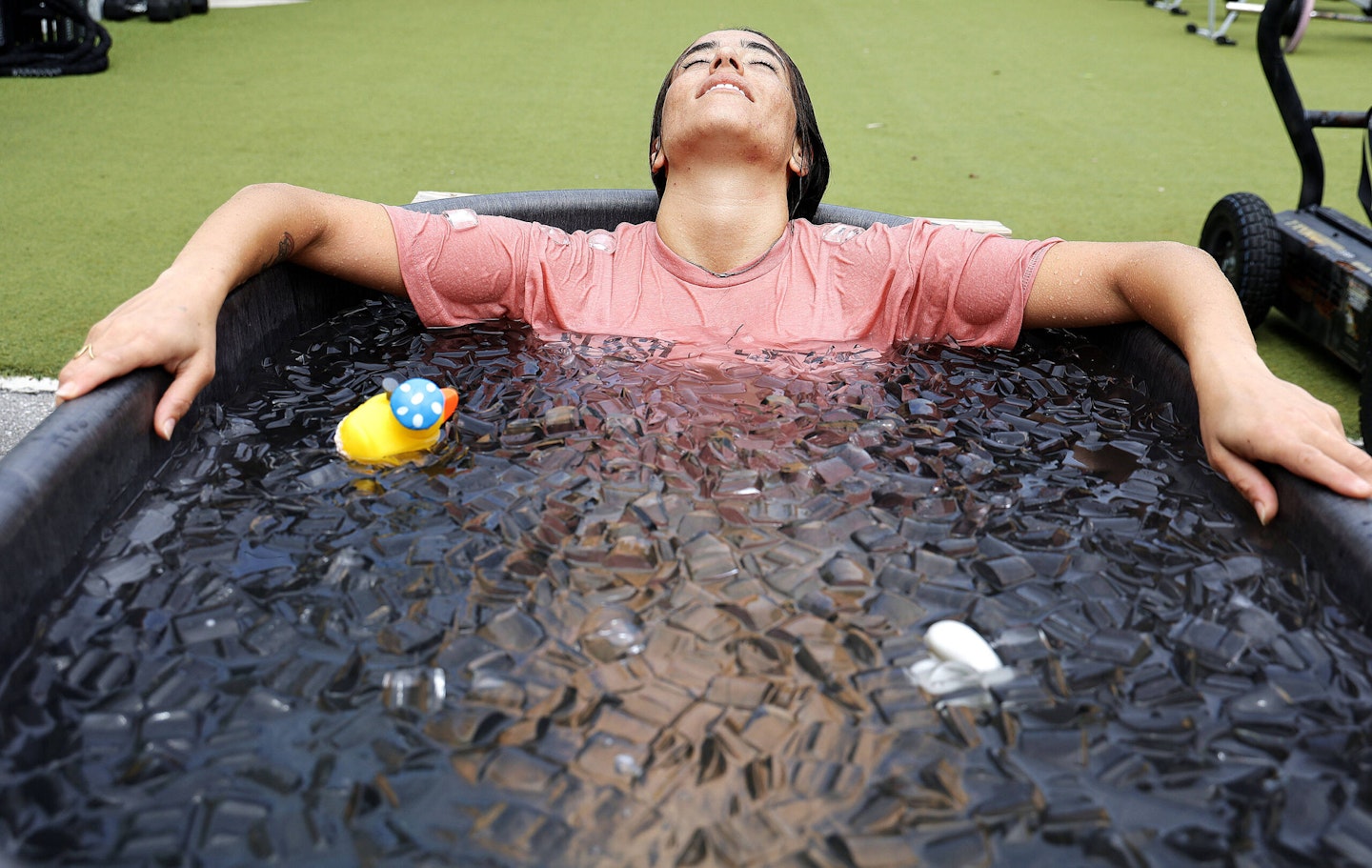
How to choose a cold water therapy tub
When you're thinking about buying a cold water therapy tub, consider the following points
-
Space - How much (or how little) room do you have for a tub? Will you need one that is portable, or you can fold away, or do you want a permanent structure in your garden?
-
Width - Would you prefer a narrow, tighter tub that you slide into, or one that allows more room to move about?
-
Depth - Ideally you want to be able to fully submerge in a cold water therapy tub so if you're especially tall make sure your tub is deep enough
-
Budget - More expensive doesn't necessarily mean better, so decide how much you want to spend and look for the highest quality option in your price range
-
Your mobility - Some cold water therapy tubs are low to the ground, others require a degree of hip flexibility to be able to climb in. Make sure you think about any mobility issues you might have - or other users - before purchasing.
The best cold water therapy tubs
If you decide to try cold water therapy, do read our tips in this article, and make sure you have some warm clothing on hand for afterwards, such as a dry robe, warm fluffy towels, a hat, and gloves, if needed. We've rounded up some accessories below our pick of the best cold water therapy tubs.
1.
Lumi Pod MAX
Best cold water therapy tub overall
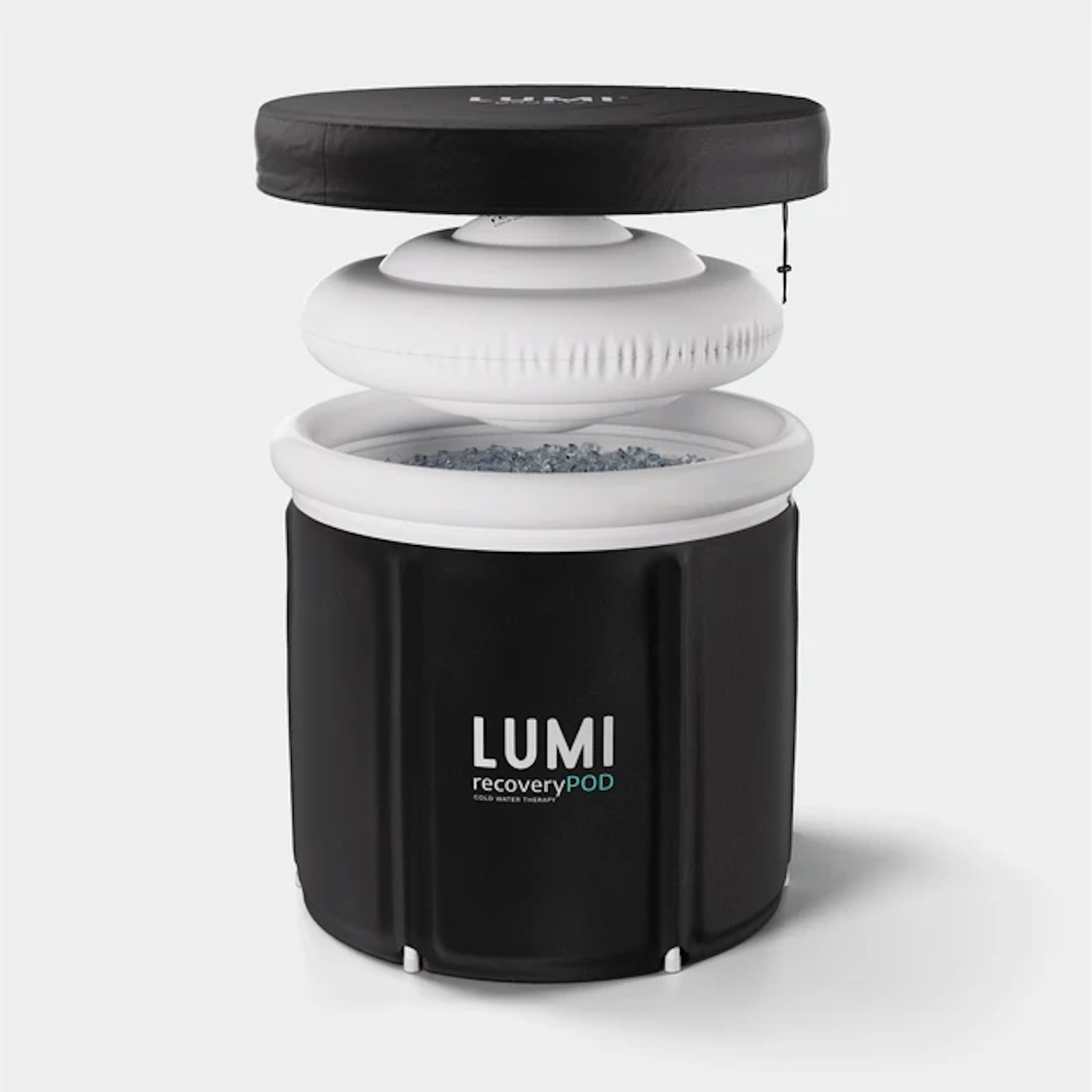 Lumi
Lumi lumitherapy.co.uk
The Lumi Pod is a social media favourite, and you may well have seen their advertising campaigns. The Lumi Pod is the smallest of Lumi's cold water therapy tubs, with the Lumi Pod max also available. Other products in the range include an ice bath.
Fitness trainer and keen runner Sarah Campus, AKA LDN Mums Fitness, swears by it for post-exercise recovery. It's easy to put up, take down, and fill. The lid is a helpful addition especially if you have children in the house, and the thermometer means you can check the temperature before you plunge.
Sarah has found that, with prolonged use, she recovers quicker after long runs and feels much more invigorated. Although cold plunging takes some getting used to, she has found much greater mental clarity too since taking it up. So much so, that she uses it outside of her training regime too.
The Lumi has been used both inside and outside by Sarah, and it's portable and not too large.
You can read a full review of the Lumi Pod here
Pros
- Comes with a lid
- Portable and easy to put up or take down
Cons
- It's not huge - which might be perfect for most but if you need more room, take a look at larger options below.
2.
The Cold Pod
The Cold Pod is a robust but easy to assemble, at-home cold water therapy tub. It's incredibly lightweight, making it very portable meaning it can be used both inside or outside your house. This was something our tester Yours.co.uk editor Claire was particularly impressed with.
"The cold pod takes less than 10 minutes to assemble. All you need to do is removed the rolled up bath from the bag and insert the plastic legs into the sides, then inflate the comfort ring that runs along the top with the air pump provided.
"I loved that I could assemble it in the house then easily carry it one-handed out into the garden to use."
The Cold Pod been designed to fit most body types, while allowing you to sit in an upright position. It's recommended for people not taller than 6ft 7in in height, but our tester felt this was a bit ambitious.
"I'm only 5ft 7in so I fitted perfectly in the tub but I think anyone with a larger and longer torso might struggle to submerge their whole torso in this."
It's engineered from three layers (with pearl foam inserted)of robust, waterproof and tear-resistant materials that are said to help keep the internal temperature stable.
"This tub feels very sturdy and high quality, the material is thick and doesn't look like it would wear over time.
"I filled my tub with cold water and added ice and it did a great job at keeping the water at the same temperature- although this was tested in February- I can't say how well it'll keep it cool for long periods over summer."
It also comes with a handy thermal cover that helps keep the tub bug-free when not in use and it features a drain-down tap that allows you to easily empty the tub.
"Overall this a great quality tub for the price. It easily compacts into a bag so doesn't require much storage space. It's light and super quick to assemble. It would make a great cold water tub for anyone taking the plunge for the first time."
Pros
- Lightweight but sturdy
- Affordable
- Compact and easy to store
- Good quality
- Quick to assemble
- Maintains temperature well
- Thermal lid to keep bugs out when not in use
- Can be used indoors or outdoors
Cons
- May not be suitable for very tall people
The Polar Recovery Tub is specifically designed for your cold-water plunges. We love that it’s easy to clean and requires minimal maintenance - just change the water every ten days or as preferred.
Our tester was a 52-year-old woman who enjoys long walks with her dog, and was looking for something to help ease her aches and pains. "My walks are usually long and can leave my muscles feeling sore and tight, especially in my legs, knees and hips. After researching various recovery methods, I decided to give the Polar Recovery Ice Bath a try."
This product claims to help relieve muscle soreness by using ice therapy, which is said to reduce inflammation, speed up recovery, and enhance overall muscle function.
"I tested this product over the course of four weeks and noticed positive results. After each session, my muscles felt significantly less sore the following day, my overall recovery time seemed to be quicker and my energy levels were higher too.
I also experienced an improvement in flexibility. After using the ice bath regularly, I noticed I had more range of motion in my legs, especially in my calves and hamstrings. This is something I hadn’t expected, but it was an added benefit"
This tub is extremely portable and light, something which our tester appreciated.
"I found the ice bathtub made from sturdy materials, and it seemed well-built, as it was both light enough to handle yet durable. The price was also reasonable when compared to the costs of other muscle recovery equipment. The instructions were straightforward, which was a relief since I didn’t want to deal with anything complicated."
It also comes with a handy lid meaning you can fill it up and leave it outside without getting any bugs or debris in it. Our tester also found it easy to clean.
Although our tester fitted in the bath perfectly she didi comment that it may not large enough for very tall people.
"After a few weeks of use, I did notice that the tub started to show some signs of wear, likely due to frequent exposure to ice and cold water. While this didn’t affect its performance, it’s something to consider in terms of long-term durability.
"Overall I would definitely recommend this product. It’s a reliable, affordable, and effective option for muscle recovery, particularly for people like me who need a non-electric, no-fuss recovery solution."
Read our tester's full review of the Polar Recovery Tub here
Pros
- Portable and light
- Easy to set up and clean
- Comes with a lid
- Suitable for indoor or outdoor use
Cons
- Might not be suitable for very tall people
- Showed some signs of wear after frequent use
| Dimensions | 80 cm diameter x 70 cm height |
The SMONTER Portable Ice Bathtub is a budget-friendly, pod-style cold plunge solution, measuring 70 x 70 cm.
Our tester used this for over five weeks, using it post-workout and for morning plunges, assessing its impact on muscle recovery, energy, and well-being.
Despite its low price, our tester was “pleasantly surprised by the quality of the material.” The setup was “straightforward and required minimal effort,” making it ideal for beginners. Though the tub includes a comfortable pillow and drains easily, its playful star-and-moon design and pink lining feel “more suited to a child’s portable bathtub,” which may not appeal to users seeking a sleek, minimalist aesthetic.
Performance-wise, it exceeded expectations. After long runs, our tester noticed “significantly less fatigue in my legs,” and her partner, who has eczema, found the cold water had “a soothing effect on his skin, reducing redness and irritation.” While we can’t confirm long-term health benefits, the short-term effects on soreness and skin health were undeniable.
Compared to more premium options, the SMONTER doesn't retain cold quite as well, but it does a respectable job—especially considering the price. Its foldable, portable design makes it best for temporary setups or those with limited space.
If you're new to cold plunging and want to test the waters without committing to an expensive setup, this is a solid entry-level choice. “If function over form is your priority,” the SMONTER offers excellent value and noticeable recovery benefits.
You can read our full review of the SMONTER Portable Bathtub here
Pros
- Large size - perfect for taller users
- Folds for easy storage
Cons
- No protective cover
| Dimensions | 70 x 70 cm |
Best foldable cold water therapy tub
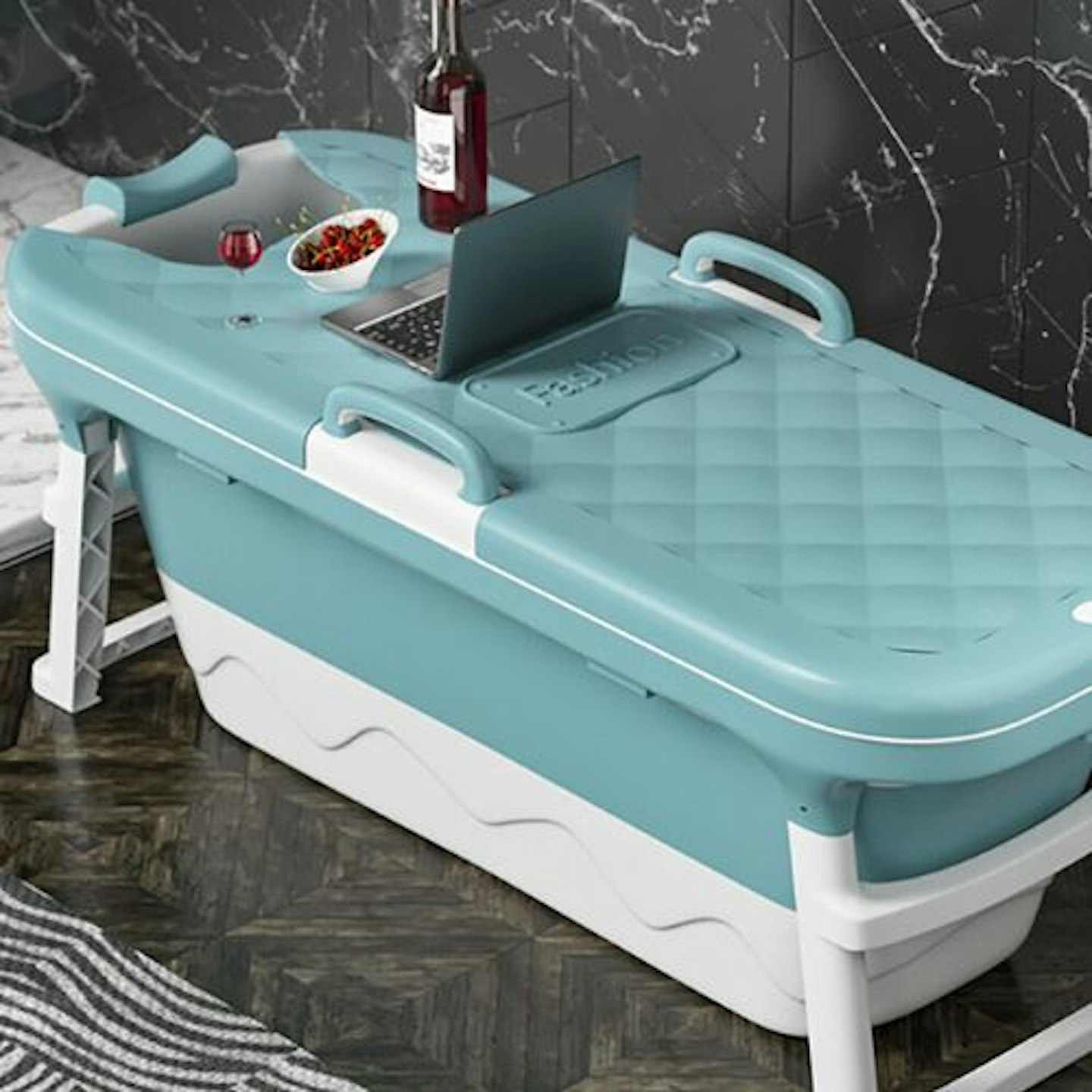
You might have seen the Foldable Freestanding Adult Bathtub advertised and, provided your mobility is good enough to get up and down from the floor with ease, it might be a great choice. You can fill it with warm or cold water and has a lid to keep the water at temperature. This makes it more versatile than other options on our list – and if you don’t have a bath at home this could double up for a relaxing warm soak too.
It's a sturdy design but it also folds up, making it portable. We love that the bottom of the bath is anti-slip for extra safety, and those are the reasons we ranked it as the best foldable cold water therapy tub.
Pros
- Fantastic design
- High-quality material
- Foldable and portable
Cons
- It is quite deep and reviewers say there could be a better way of emptying the water such as a normal plug rather than the pipe
| Dimensions | Unspecified. |
The best traditional cold water therapy barrel
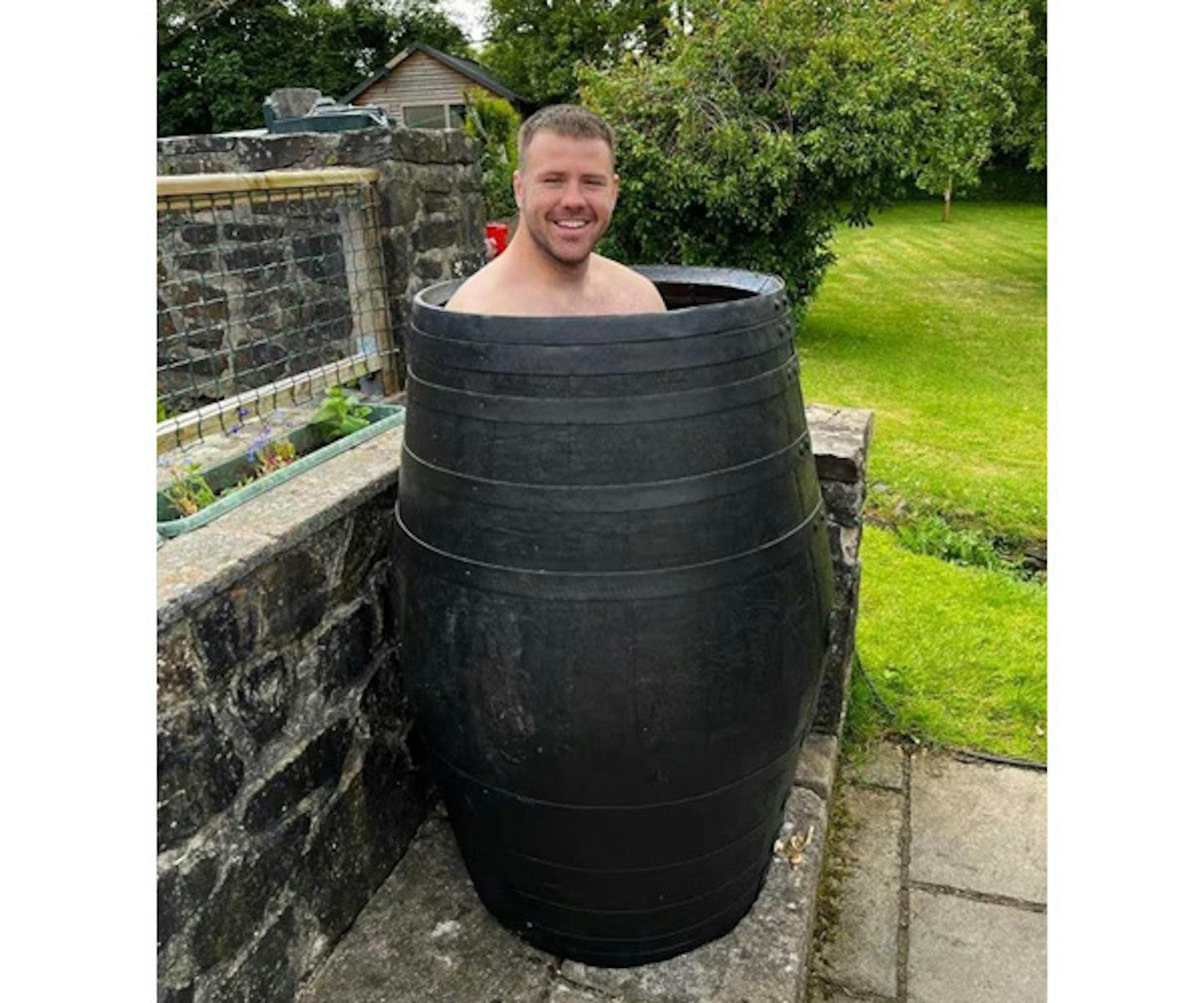
www.etsy.com
Using a barrel as an ice bath is the traditional way to do cold water plunging, and Celtic Timber produce the aesthetically pleasing barrels Oak Barrels for Ice Bath Recovery but be warned – they are very heavy.
They come with a lift-off lid made from the original barrel top, which we love, and there’s also a tap for easy drainage. It’s recommended that you keep the barrel full even when not in use to prevent the barrel staves from drying out, especially in summer.
Reviewers have praised Celtic Timber for their customer service, stating: “Dispatch and delivery were rapid, even over the Christmas and New Year period. Communication and customer service were excellent when I had a query.”
Although they’re not cheap (prices vary), if you’re wanting a visually pleasing addition to your garden, these oak barrels are a great choice. Add in the great customer service, and that's why we rate it as our best traditional choice.
Pros
- Rustic traditional design
- Looks great in the garden
Cons
- Heavy
| Dimensions | 55 Gallons. 89cm H x Belly Diameter – 72cm, Top Diameter – 60cm / 60kg |
Best cold water therapy tub with plenty of room
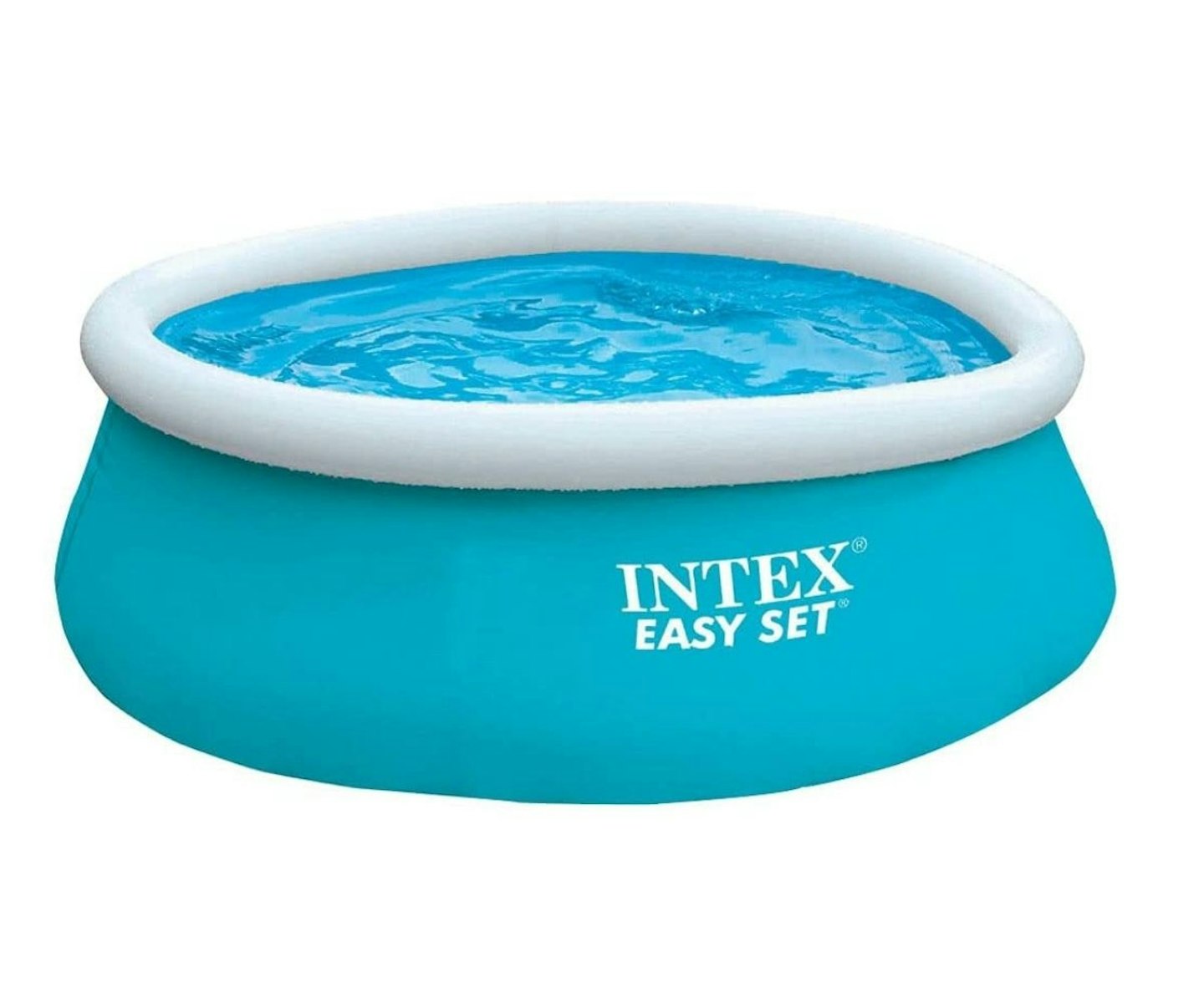
Yes, this is actually a large paddling pool rather than a dedicated cold-water plunge tub, but if you need the extra room – whether for mobility issues or because you want to have room for more than one person- this Intex Easy Set Swimming Pool is a good buy.
We’ve always found Intex pools to be really good quality, and a reviewer notes that it’s “quite a robust yet simple design.”
It does take up quite a bit of room, at 6ft wide, which also means it takes a lot of filling. However, if you’re going to use it regularly for a run of days in a row, it’s worth the effort. There’s no cover included though, so you may want to pop a tarpaulin over the top when not in use.
Pros
- Doubles as a paddling pool
- Good quality, robust design and easy to set up
Cons
- Better suited to large gardens
| Dimensions | 110 x 310 x 360 cm |
Best budget cold water therapy tub
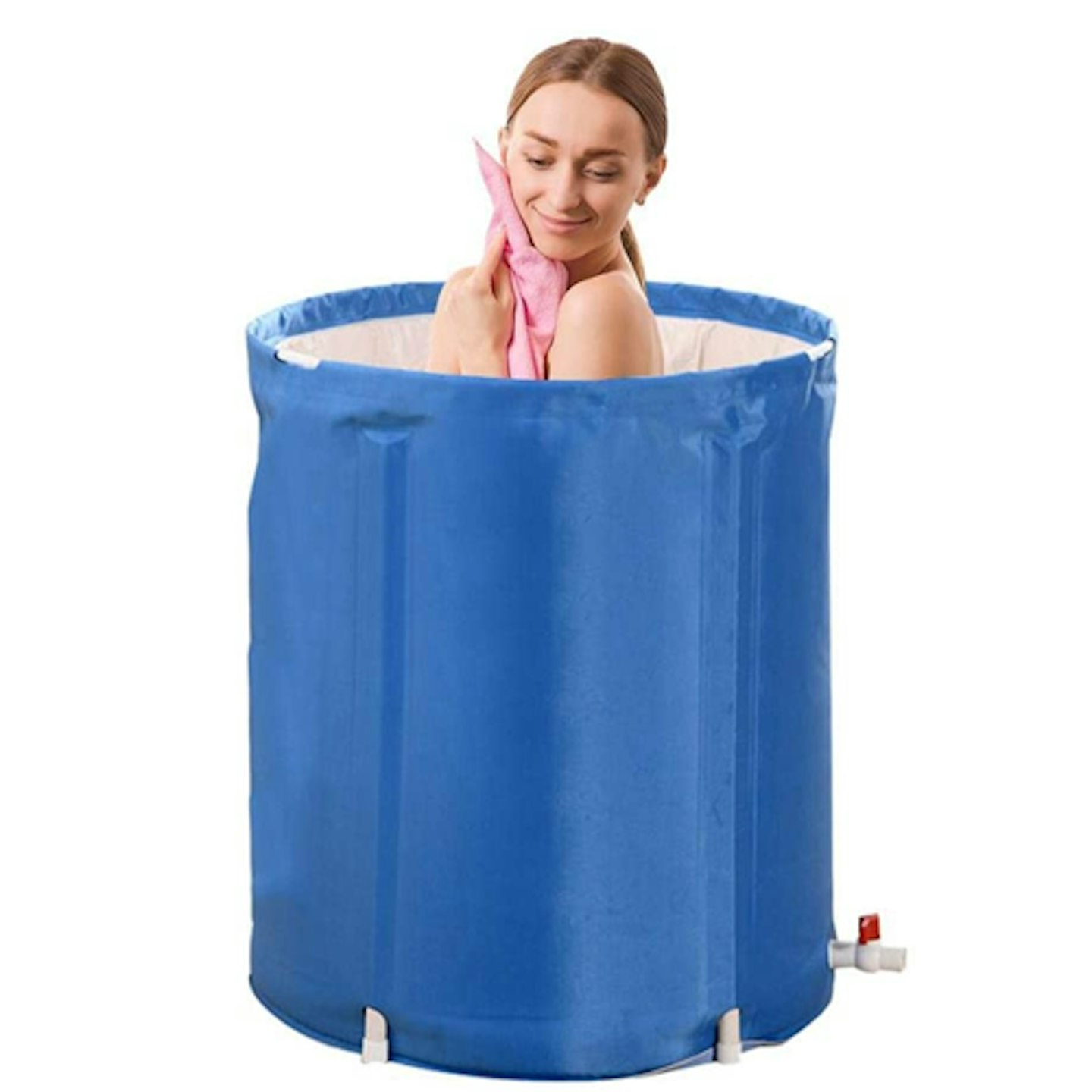 Amazon
AmazonThis Dynamicoz Portable Foldable Bathtub is our budget pick and might be a good way of trying cold plunging before you take the plunge and buy a more expensive permanent fixture. This tub is made of thick waterproof fabric, but it’s still very lightweight. It’s also portable so you can position it where you want – you could even bring it inside during colder months though this might defeat the object of cold-water therapy somewhat.
The cylindrical shape means you can sit comfortably inside it and be fully submerged – it measures 70cm high and the rim around the top is supportive enough for you to rest your head or arms on it. It also comes with a water cushion.
It's not as great as the SMONTER Portable Bathtub, because it's not as big, but it is cheaper and does take up less space, so we've made it our best budget pick.
Pros
- Good value - ideal if you're trying cold water therapy for the first time
- Foldable for easy storage
Cons
- It is a budget option and you might be better to invest in a more permanent structure
| Dimensions | 65 x 70 cm |
Read more...
 Amazon
AmazonIf you are interested in cold water therapy and want to learn more, then we recommend Wim Hof's book, The Wim Hof Method. It will show you how to harness three key elements to master mind over matter and achieve the impossible - cold, breathing and mindset.
Sarah Campus is a personal trainer, nutrition coach and wellness expert. She started using cold water therapy when training for her first London marathon. Below, she shares tips and advice for anyone thinking of trying cold water therapy, as well as offering insight on how it's benefitted her personally:
FAQs
Why I started taking ice baths.
"I was training for my first marathon, and five weeks into training I got a stress fracture," Sarah says. "I couldn't run for seven weeks, so I really only had four weeks to train on my feet. I controlled everything that I could to encourage healing, so I used oxygen chambers, and I ate lots of different anti-inflammatory foods.
It's important to use cold therapy for healing rather than heat, so that the swelling around the bone can reduce, so I used an ice bath three to four times a week, and I still use it regularly now."
How to take an ice bath.
Sarah explains her step-by-step process: "My cold therapy tub has always got water in it, and I change it about every three weeks - it's very easy to clean. I add ice to make it cold, and you can buy it from the shops or fill up Tupperware containers and stick them in the freezer.
It's got a thermometer in it, so when you want to get in, take the lid off and check the temperature. I wear either my pants and bra or a bikini. You want to stay in for a minute per degree and no longer so for example, if the water is three degrees it's three minutes, six degrees, six minutes.
When you get in, it takes your breath away, so you inhale first then as you submerge, exhale. It can feel sharp, but that very quickly subsides as your body gets used to it. When you get out, your body will be red because the blood has rushed to the surface. I pop on a dressing gown or a dry robe, then go and take a shower. Just make sure your shower isn't too hot."
Why do people take ice baths?
Physical recovery: Many athletes take an ice bath after training. It can change how fluids like blood and lymph flow through your body. In this process, your vessels constrict due to the cold and open up after you get out and warm up. Scientific evidence suggests that cold water therapy helps the metabolic waste from your body. All the while, this gets oxygen and nutrients to your muscles. Additionally, ice baths lower inflammation after intense physical exercise, helping with recovery.
Weight loss: Another potential benefit of ice baths is that they could lead to weight loss, as cold temperatures stimulate the activation of brown fat tissue throughout your body. The brown fat encourages your body to produce heat as it burns off white fat. If you are on a weight loss journey, taking regular ice baths prevents the accumulation of excess body weight.
Increased parasympathetic activity: As mentioned above, exposing your body to icy temperatures on a regular basis is known to make you more resilient to stress, anxiety and depression. The cold stimulates the vagus nerve, which leads to an increase in parasympathetic activity. This has amazing effects on many conditions, such as anxiety, depression, and gut and digestion problems.
What does an ice bath do?
According to Dr A. Brion Gardner, an orthopaedic surgeon with The Centers for Advanced Orthopaedics for Healthline, taking a cold plunge can help ease the soreness, burning and aching in your muscles after training sessions. When you expose your body to the cold, it causes the blood vessels to constrict. This reduces inflammation, swelling or other reactions in the body.
Cold water therapy tubs can offer potential mental health benefits. "It's so invigorating for the mind," Sarah says. "It really helps mental clarity and it's such a good feeling. It gives you a buzz. Sometimes I close my eyes and focus on my breath, other times I'll put on some really upbeat music as it makes me feel really strong."
What are the benefits of ice baths?
According to the Dutch motivational speaker and extreme athlete Wim Hof (aka The Iceman), our skin is never exposed to the natural elements. However, he believes we are built to be stimulated. As there are thermal receptors on the surface of our skin, being exposed to cold water gives us an electrical jolt to the deepest part of our brain.
The cold stimulates our vagus nerve, a part of our parasympathetic nervous system. This controls many crucial bodily functions such as mood, immune response, digestion, and heart rate. When the vagus nerve is activated, it taps into our parasympathetic mode. Then, our breathing and heart rate slow and allows our body to remain in a state of calm.
Sarah sums it up as follows: "It allows your body to heal. It reduces pain and inflammation, it increases alertness and reduces muscle soreness."
A step-by-step guide to taking an ice bath.
Temperature: The first step is to make sure you have the right temperature. The water should be between 10-15°C. If using a blow-up or fold-down tub mentioned above, you should get some bags of ice and use a thermometer to check the temperature.
How to position yourself: Position your body so that you can fully submerge into the ice bath. Ideally, you want to get your entire body up to your neck submerged in the water in order to reap the full benefits of blood vessel constriction.
Time: The best time to take an ice bath is directly after a workout, but you can use it at any time. After about an hour or so, many of the inflammatory, physiological responses would have already started or finished by this time.
Breathing: Perhaps the most important aspect of taking an ice bath is breathing. It is a central part of the Wim Hof Method, and when he coaches people to breathe properly, he states that “to oxygenate the body, you must keep calm and endure the shock of the cold water.”
Are cold showers the same as ice baths?
While it's not quite the same experience as submerging yourself in icy water, you can still get some of the effects by taking a cold shower. While cold showers were often talked about before, it was Wim Hof, aka the Iceman, who really started the cold shower movement.
Some benefits of cold showers include reduced stress, higher levels of alertness, more robust immune response, increased willpower, and weight loss. Immersing yourself in icy water “brings balance to the hormonal system,” he states in a video tutorial on his website, where you can take online courses in the Wim Hof Method.
Wim Hof advises gradually building up the duration and intensity of your cold shower. If you have no prior experience with cold showers, start with a regular shower and finish the last 30 seconds cold. You quickly notice that you are able to tolerate the cold more over time.
Wim Hof instructs Joe Wicks on how to take an ice bath. The best method is to take 30 deep breaths, inhale and exhale, and then hold the breath between 1.5 and three minutes before hopping in. You can watch this experience in the video below:
Sarah Campus is known as @LDNmumsfitness on social media. She is a female personal trainer, nutrition coach and wellness expert with over ten years experience in her field. She regularly offers her expertise to health and wellness articles.
Alasdair Nicoll is a personal trainer and tutor for The Fitness Group. He's experienced in helping athletes to recover after training.
Becky Fuller is a senior digital writer for Yours.co.uk. She is also a fully qualified personal trainer and strength coach, specialising in fitness and wellbeing for over 50s. Prior to joining Yours, Becky was a fitness writer for Saga, and a freelance entertainment and theatre journalist. Becky is passionate about helping people to move well and discover the many benefits of strength training.









